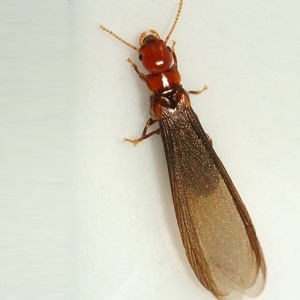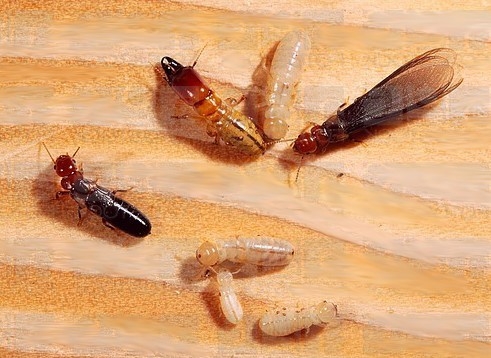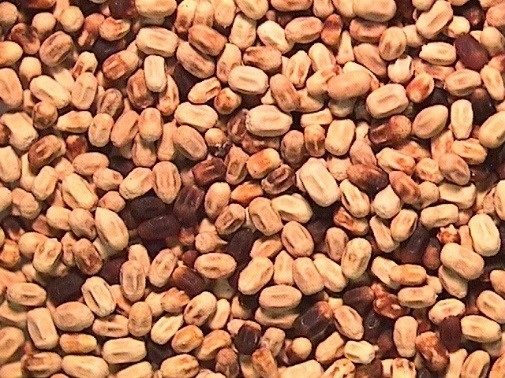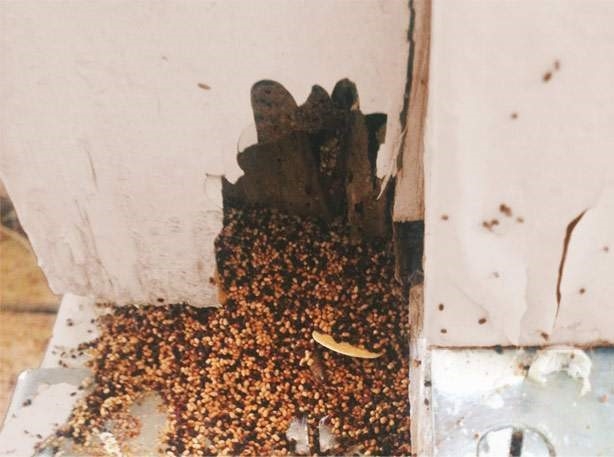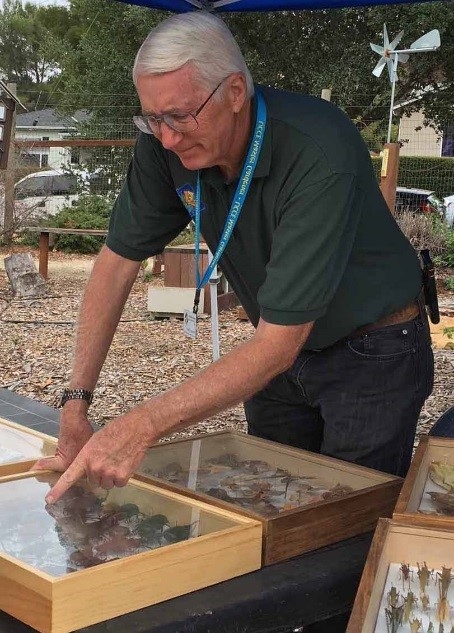Norman Knows...
Western Drywood Termites
Probably the biggest termite pest in this area is the Western Drywood Termite. No doubt, many of us have seen the homes and buildings covered with large tarps, or perhaps had your own home covered for fumigation. Fumigation is the treatment of choice for the drywood termite. Unlike the subterranean termite that we reviewed earlier, the entire drywood termite colony - kings, queens and workers - is in the structure. Generally, a good fumigation job will eradicate the termites from your home. The only drawback from fumigation, besides the inconvenience of being out of your home for a few days, is that there is no residual action on future termites. Once the tarps are removed, the fumigant is completely dissipated and your home can be re-infested the next day.
Drywood termite infestations are slow to get going. It usually takes about 9 years before you start seeing substantial damage, so if you are given a diagnosis of drywood termite in your home, but don't have the money to fumigate right away, it is no problem to wait awhile and save up the money. You will need to eventually treat, especially if you plan on selling it soon, but don't let the fumigation company pressure you into an immediate fumigation at a time when you can't afford it.
How can you tell if you have drywood termite and not subterranean? Drywood termites do not use dirt in their tunnels. Their tunnels are generally clean. But they do discard their droppings or pellets outside the colony through a drop hole. You can often see these pellets in a small pile or spread across a window sill or the floor. I have had people tell me that they had been cleaning them up for years, but had no idea what they were. Note the close-up picture of pellets. They have shallow grooves in them which distinguishes them from other look alike pellets. Sometimes pulling loose bark off of trees will unleash a cascade of these pellets - indicating that the heart of the tree is infested with drywood termite. What is wrong with this? The termites will not kill the tree, as they do not feed on wet or live wood, but they will go after the heart wood which is usually dry and dead. This can weaken the tree, increasing the danger of limbs or the tree falling in your yard or on your home. But the worst side effect of having an infested tree in your yard, is that when the colony swarms from the tree, your shingle roof is right there, ripe for infestation.
Speaking of swarming, unlike subterranean termites, drywood termites swarm in the summer months, usually from about June through October. How does knowing about this help you? Reproductive drywood termites are highly attracted to recently milled wood, such as pine 2x4s, etc. I have seen foundation wood dropped on a homebuilder's property one day and infested by the next day. If the contractor and homeowner are not aware of this, you end up building a drywood termite infestation into your home from day one. They are night swarming, so look for termites crawling around the stack in the early hours of the morning. Look for loose termite wings in-between the 2x4s. And, avoid building a home between June and October, or at least have the stack covered with tarp the minute it is dropped.
Fresno County Medical Center built a new wing on their hospital in July 2000 in Fresno. A worker brought a piece of a 2x4 into my office, wanting to know what these insects were on the stacks of wood. They were reproductive drywood termites (which are twice as big as subterranean termites and have a red head instead of a black head). I noticed plugged holes in the wood and was able to dig out the king and queen from their nuptial chamber. This was wood that had already been used on nearly all the foundation of the new wing. The contractor had to fumigate the structure before the walls went on to keep from building a drywood termite infestation directly into the new wing. Many of Fresno's street trees are infested with drywood termite and it was not surprising to see all the reproductives on the stacks of wood at the medical center. I wouldn't be surprised if we had the same problem here in San Luis Obispo.
Norman Smith was the Fresno County Entomologist for 30 years. He fielded calls from the general public, pest control companies, farmers, PCA's, etc.; ran the insect trapping program, and gave presentations on insects to many different groups, including lots of schools. Norman has developed a 100,000 insect specimen collection for the county over the 30 year career. Norman earned a Ph.D. in Entomology at UC Davis in 1979.
Norman says...I now enjoy working in my garden, traveling with my wife, golfing and bowling, taking insect collecting trips in the US and overseas in the tropics, and working on some personal research of some small wasps. I also enjoy working with and for the Master Gardener program in SLO.
